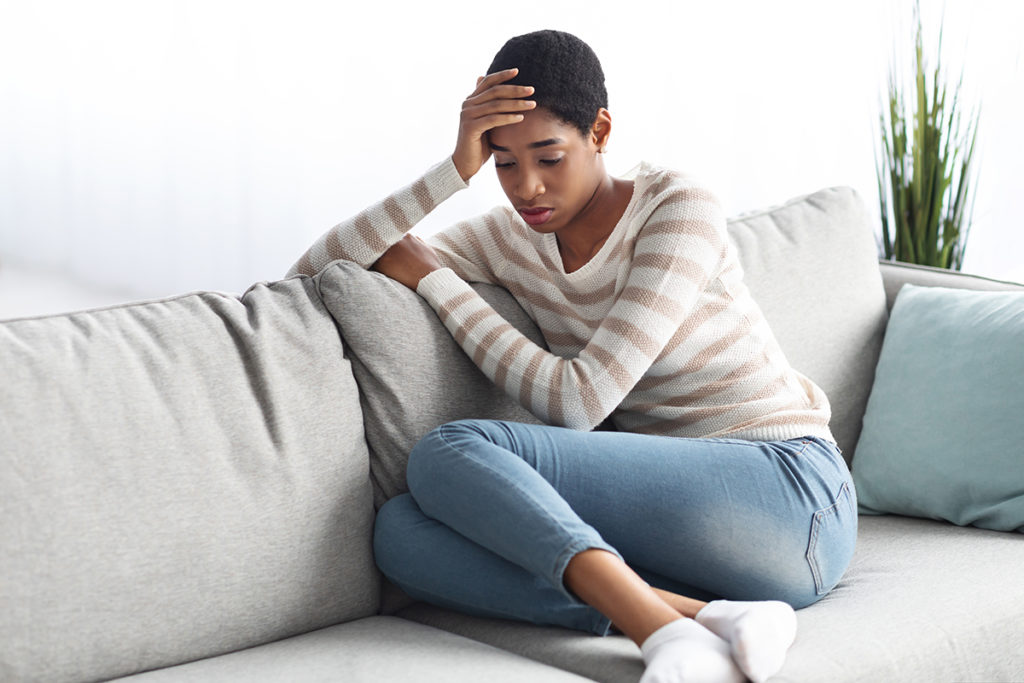Seasonal depression (often referred to as seasonal affective disorder, or “SAD”) can be a natural part of life. However, the desire to learn how to combat seasonal depression is every bit as natural. While it’s unrealistic to expect seasonal depression can be eradicated, it doesn’t need to be accepted as inevitable.
You can do numerous things to mitigate the effect of seasonal depression. For those in areas where seasonal depression is common, it’s essential to take at least some proactive steps to prevent it or reduce its severity. Learning about this is just one such step, and the following is a brief overview of the main factors involved with seasonal depression.
Causes of Seasonal Depression
Most generally, levels of seasonal depression are higher during the winter and fall. They’re also higher in areas with more frequently overcast skies or less sunlight exposure. At far northern latitudes, daily sunlight levels can be pretty low at certain times of the year.
Seasonal changes in the UV light spectrum affect vitamin D levels. In the Northern Hemisphere, sunlight is not converted to vitamin D as readily during the winter months, even when it’s bright out. For this and other reasons, melatonin levels are elevated during the seasonal depression.
Melatonin regulates not only the circadian rhythm but mood and personality expression as well. As the amount of light diminishes, melatonin levels increase. Serotonin levels decrease at the same time, and this combination leads to more fatigue and less enthusiasm.
Most Common Triggers
Not everyone experiences seasonal depression in the same way. This is true even in darker areas and during the wintertime. That’s because several other factors impact seasonal depression levels.
Other factors that can cause seasonal depression or affect its severity include:
- Increased cloud cover, especially for extended periods
- Lack of meaningful activities or something to look forward to (especially if one dislikes the winter or fall)
- Poor sleep cycles and nutrition
- Reduced time spent outdoors or overall exposure to sunlight
Note that even a brightly lit interior space, while better than constant shade, can reduce the amount of useable sunlight. Standard windows don’t allow the full UV spectrum through. Getting enough vitamin D and regulating your circadian rhythm requires taking in sunlight while actually outdoors.
A formal SAD evaluation usually requires two consecutive years of recurring depressive episodes. The formal standards for a SAD diagnosis are:
- Onset and alleviation of depression timed with seasonal shifts
- Two major depressive episodes, characterized by common symptoms of depression (such as inattentiveness or feelings of depression and hopelessness)
- A history of seasonal depression that far outweighs the occurrence of non-seasonal depression
Further, a seasonal depression diagnosis usually requires a recurrence of the same depression symptoms. This is to rule out other causes of the depression (e.g., loss of job during winter — though not because of winter).
Most realistically, seasonal depression is one of several factors in an all-around struggle with depression. The seasons could simply “bring it out” a little more than otherwise. Those with depression independent of seasonal depression may feel a worsening of symptoms during the darker months. How depression occurs for each individual is almost always unique.
Preventing Seasonal Depression
Taking charge of your circadian rhythms is one thing anyone can do to prevent seasonal depression. According to one neuroscientist, viewing sunlight within 30–60 minutes of waking is one of the best ways to achieve better circadian rhythms. The more overcast the sky, the more time is required to obtain enough sunlight.
Spending time outdoors also improves health overall, as shown by the well-corroborated Japanese “forest bathing” studies. On top of improved circadian rhythms and vitamin D levels, being in nature reduces cortisol and blood pressure.
What to do in Case of Seasonal Depression?
Learning how to combat seasonal depression is best approached as a work in progress. It can be counterproductive to increase the feeling of burden and pressure on the depressed mind.
Instead, take small but significant action steps to reduce the seasonal depression triggers that are most easily under your control. Making minor adjustments like this every day will build over time into a robust natural resilience to seasonal depression and depression generally.
You can combat seasonal depression most sustainably by taking easy action steps, then making them second nature.
Consider any combination of the following treatments for seasonal depression:
- Increase vitamin D intake
- Light therapy using full-spectrum light bulbs
- Hormone supplementation
- Cognitive behavioral therapy (CBT)
- Dialectical behavioral therapy (DBT)
- Yoga and mindfulness training
- Music therapy
- Art therapy
After a period of seasonal depression, a brief recovery is expected. It may be beneficial to simply increase one’s rest and adopt a guilt-free attitude about it. Trying to resist the need for rest usually does more harm than good.
As the cliché goes, being depressed could be equated to your body’s demand for “deep rest.” In our often stressful way of life, however, many have difficulty accepting this, feeling systematically pushed to drive themselves continually. At the very least, managing self-expectations could be very beneficial for seasonal depression.
Treatment for Depression
Depression, in general, is challenging during any time of year. For purely seasonal depression, it can be heartening to know your symptoms come and go. Yet, in the middle of any depressive episode, consolation can be hard to come by. Temporary or not, it hardly seems like cause for hope when you’re right in the middle of it.
Those experiencing seasonal depression owe it to themselves to take a significant step toward securing help. Seasonal depression may subside with the snow and cloud cover, but daily obligations don’t. They need better tools and resources to reframe the experience of depression more healthily. For some, working through depression is much more effective than others.
Help for depression can be obtained through a clinic, where you’ll receive the support of both:
- Trained mental health professionals
- Peers who can offer moral support and understanding
Seeking Help with Everlast Recovery Centers
Waiting for seasonal depression to go away on its own can be a depressing thought. But pushing yourself to recover can fuel even harder feelings, especially without the right mental-emotional tools and guidance.
We specialize in helping those with depression turn their situation around. Our clients receive the care and support needed to control their depression. One step at a time, we proudly watch our clients reveal the inner resources necessary to enjoy brighter days.It all begins with a single bold step. Reach out and contact Everlast Recovery Centers today. You’ll be glad you did — even if that feeling comes after finally seeing depression as a distant memory.





